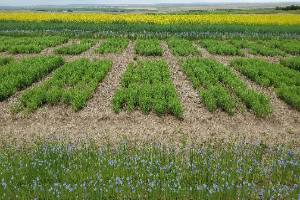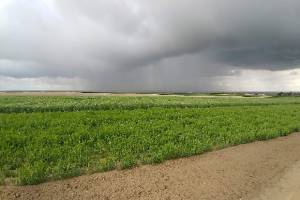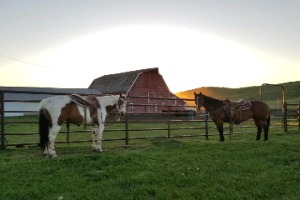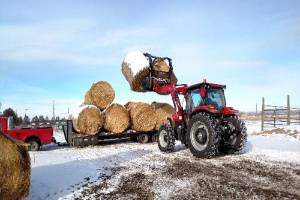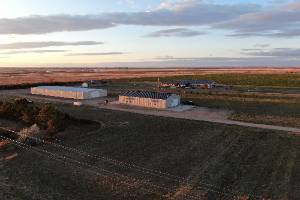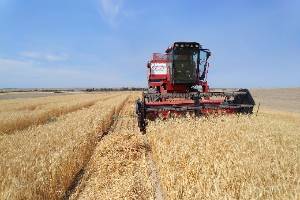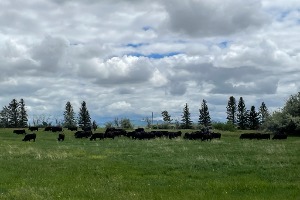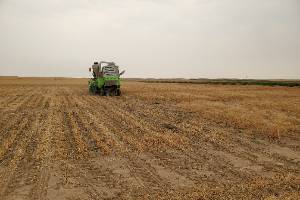Northern Agricultural Research Center

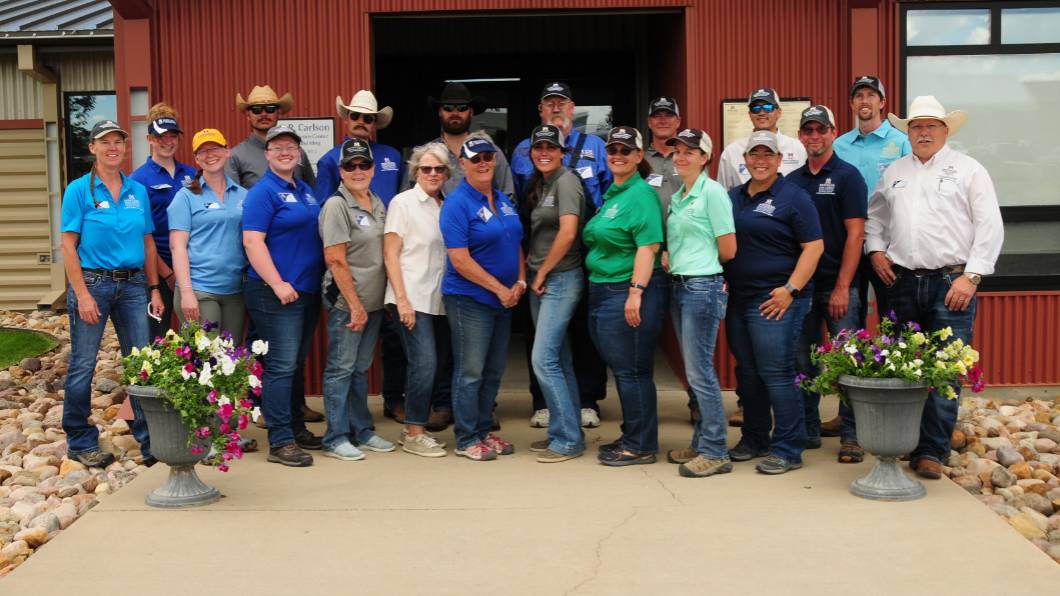

The Northern Agricultural Research Center consists of 3,000 acres at the main facility with an additional 3,960 acres of grazing land located in the nearby Bear Paw Mountains. The 3,000 acres on the main facility supports both crop and livestock research activities which is distinctly unique to MSU. The research center has recently completed $2.8 million of construction and renovation, including a new $2.1 million office/laboratory complex. In the spring of 2014, two center pivots suitable for research were installed. A modern research scale greenhouse was funded and designed with construction to be completed in the near future. The research center, when fully staffed, consists of three faculty, two operations managers, research scientist, master's level technician, and 12 permanent support personnel. A local advisory board made up of area producers and industry representatives from the five surrounding counties, provides guidance on NARC research priorities.
Field Day is June 20, 2024
Conservation of Beneficial Insects while Controlling Cropland Grasshoppers
Contributors: David K. Weaver, Tyler J. Lane, Samuel S. Anderson, Tim Seipel, and Hayes Goosey
If you are planning on controlling grasshoppers in cereal or other crops this year, you should consider impacts on non-target organisms, such as honeybees, native pollinators, specialist parasitoids, and predators that kill pests. All these organisms are vulnerable to the modes-of-action of most insecticides used to control grasshoppers. All these beneficial insects help with crop yields, by either pollinating or by killing pests that will impact yield at harvest, such as wheat stem sawfly.
Two native parasitoids, Bracon cephi and B. lissogaster are known to survive only by using wheat stem sawfly larvae as their primary host. They kill larval wheat stem sawflies by consuming them inside the stems, where the larvae are feeding. Growers who have had to treat grasshoppers in their cereal crops, especially for multiple applications over several years, have frequently reported increased levels of wheat stem sawfly damage. This is directly related to killing wheat stem sawfly parasitoid adults, which help prevent yield loss and reduce wheat stem sawfly populations.
Pollinator and parasitoid mortality occurs when insecticides are used to control grasshoppers. The insecticides in question are those that are less expensive options for grasshoppers and can kill both immatures and adults. Such insecticides are contact insecticides and are strongly recommended to be applied in the morning to control grasshoppers - which are day-active. Thus, even the guidelines for spraying at dusk or at night to protect pollinators are not considered when managing grasshoppers.
Diflubenzuron, or Dimilin, is more expensive and requires scouting to detect bands of immature cropland grasshopper nymphs earlier in season. It can be applied without impact on parasitoids or pollinators because it kills immature insects that must go through a molt or molts before finishing metamorphosis. Diflubenzuron will not kill adults; thus, it is safe for use with both early and late-season adult parasitoids - or honeybees or native pollinators.
It's important to note: 1) Diflubenzuron will also kill cutworms in crop when targeting grasshopper nymphs, and 2) USDA-APHIS has a large spray program in MT rangeland that targets grasshoppers in areas that are 10,000 contiguous acres. This helps reduce grasshopper populations on the landscape that might migrate into crops. APHIS only applies diflubenzuron and stops spraying when grasshopper populations are adults, because of these same concerns about beneficial insects.
For more information on grasshopper monitoring, see Grasshopper Management and Control in Montana - https://apps.msuextension.org/magazine/articles/5527
Contact: Hayes Goosey, Ph.D. Assistant Professor and Extension Forage Specialist, Montana State University Dept. of Animal and Range Sciences, Office: 406.994.5688, hgoosey@montana.edu
Watch for Anthracnose in lentils this coming season
Anthracnose, a lentil disease caused by the pathogen Colletotrichum truncatum, has been detected in 16% of lentil seed lots tested in the Regional Pulse Crop Diagnostic Lab this winter. While levels of this seed-transmitted pathogen are low, the widespread presence of the pathogen in seed lots indicates that growers should be vigilant in monitoring their lentils this growing season, particularly if environmental conditions are favorable for the development of Anthracnose. Favorable conditions include abundant rainfall during bloom and pod development and a dense canopy. Symptoms include light-brown lesions with a dark border and initiate low, at the base of the plant, and spread upward. Serious infections could result in patches of dead plants.
|
Anthracnose on lentils causes tan lesions on stems, often with black borders, that can indent the stem. Defoliation and girdling can cause plants to wilt and lodge. Photo credit: Michael Wunsch, North Dakota State University. |
Please consult the Regional Pulse Crop Diagnostic Lab website for more information on Anthracnose and other seed-borne diseases of pulse crops.
This AgAlert was written by Carmen Murphy, Postdoctoral Researcher at Montana State University (carmenmurphy@montana.edu).
The alert was sent by Uta McKelvy, Extension Plant Pathologist (uta.mckelvy@montana.edu).
NARC Mission
To conduct and promote studies, scientific investigations and experiments relating to agriculture, natural resources and rural life and to disseminate this information to the people of Montana.
NARC Virtual Field Day 2020Statewide Virtual Field Day 2020
|

